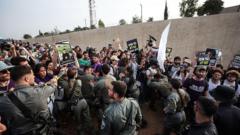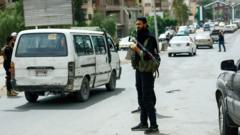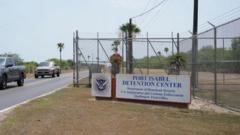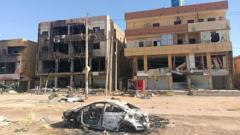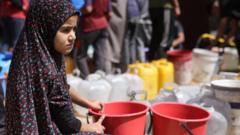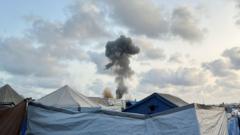Three days post-earthquake, residents in the war-torn city of Sagaing, Myanmar, struggle to receive aid as military restrictions hinder rescue efforts. The death toll continues to rise, raising international concerns about the humanitarian response.
Struggles in Myanmar and Thailand After Devastating Earthquake

Struggles in Myanmar and Thailand After Devastating Earthquake
A 7.7-magnitude earthquake has left over 2,000 dead and many trapped. Rescue efforts face military obstacles and geographical challenges.
In a tragic turn of events, a powerful 7.7-magnitude earthquake struck the city of Sagaing in Myanmar late last week, the most severe quake in over a century. The quake has resulted in extensive destruction, with initial reports indicating more than 2,000 fatalities and nearly 3,900 injuries across the affected regions, including Sagaing, Mandalay, and Naypyidaw. The city of Sagaing, home to around 300,000 residents, has been particularly impacted, with estimates suggesting that over 80% of the area has been devastated.
As rescue operations began, humanitarian aid faced significant challenges. The military regime in Myanmar has reportedly restricted the movement of local volunteers attempting to provide assistance to the most affected areas, complicating search and rescue efforts. Local resident U Tin Shwe expressed frustration, stating that they were required to gain military permission to enter areas in need, including places where monks were trapped under rubble.
While some international aid teams have started to arrive in Mandalay and Naypyidaw, many residents have taken to social media, appealing to the global community for help directed toward Sagaing—a region that lies near the epicenter of the earthquake. As the crisis unfolds, appeals intensify for the redirection of international aid to ensure that the citizens of Sagaing receive the urgent support they need in the aftermath of this catastrophic event. Preliminary analyses from the U.S. Geological Survey warn that the number of fatalities could surpass 10,000 based on current trends, igniting further humanitarian concerns.
As rescue operations began, humanitarian aid faced significant challenges. The military regime in Myanmar has reportedly restricted the movement of local volunteers attempting to provide assistance to the most affected areas, complicating search and rescue efforts. Local resident U Tin Shwe expressed frustration, stating that they were required to gain military permission to enter areas in need, including places where monks were trapped under rubble.
While some international aid teams have started to arrive in Mandalay and Naypyidaw, many residents have taken to social media, appealing to the global community for help directed toward Sagaing—a region that lies near the epicenter of the earthquake. As the crisis unfolds, appeals intensify for the redirection of international aid to ensure that the citizens of Sagaing receive the urgent support they need in the aftermath of this catastrophic event. Preliminary analyses from the U.S. Geological Survey warn that the number of fatalities could surpass 10,000 based on current trends, igniting further humanitarian concerns.





